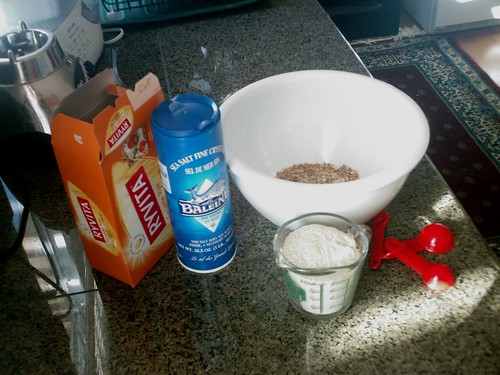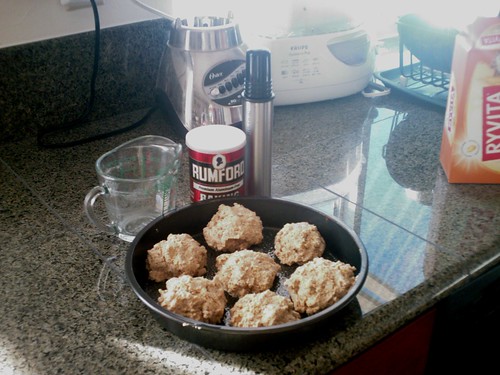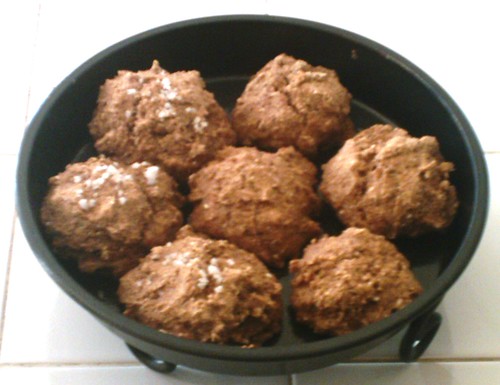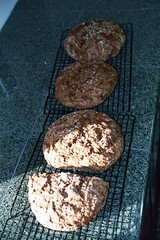
The weather’s just dandy, ducks!
I still can’t believe that this duck pattern is so simple, but I’m looking at the instructions, and I’ve got the googly eyes, so I guess I’m going to give it a go.
Happy Pesach, Good Friday, Spring & Weekend to Everybody. Now that I am actively trying to…reduce (grump, grump, GRUMP!), I have to be a bit less… er, social, which means no more swanning around from house to house chatting up friends and relatives and indulging in whatever little Cadbury bits people bestow upon me (around this time of year, it’s just as well — I mean, marshmallow PEEPS! UGH! Not that it stopped me from eating them, sadly.). However, I shall still come bearing gifts when I do pop by — and what better time of year than to bring macaroons?
Macaroons are a traditional cookie during Passover for Jewish families because they follow kosher laws – they contain no wheat, rye, barley, oats and spelt that take more than 18 minutes to cook completely (after coming in contact with water), and no leavening. The recipe I found is for almond macaroons, which is traditional, or you can use Mac’s ultra-healthy, chewy coconut/okara macaroons. (Even if you don’t have okara, those are quite tasty!)
ALMOND MACAROONS
2 cups almonds (1 1/2 cups ground)
1 cup xylitol (or sucanat or white sugar)
Zest of 1 large lemon
3 egg whites
Canola oil cooking spray
A blender
A mixer
FIRST, Preheat oven to 275.
NEXT, Line a cookie sheet with heavy duty foil and spray with canola oil.
* In a covered blender, chop up the almonds half at a time until finely ground.
* In a bowl, beat the egg whites with a mixer until they form soft peaks.
* Add the lemon zest.
* Gradually add the Sucanat and beat until the whites are very stiff and shiny but not dry.
* Fold in the ground almonds.
* Take spoonfuls and drop onto the cookie sheet about 1 – 1 1/2 inches apart.
* Bake for 20 – 30 minutes, or until edges are hard, but the middle is still soft and golden.
* After 5 minutes, carefully place the foil with the baked macaroons on a cookie sheet to cool.
These are a bit like sugar cookies – the almonds, when finely ground, look a little like raw, browned sugar. A dip in chocolate, and they’re even better! And speaking of a chocolaty – and still healthyish – macaroon alternative, try:
Chocolate-Coconut Macaroons
* 3 cups unsweetened coconut, lightly packed
* 1/4 cup cocoa
* 1 cup sugar
* 2 tbsp. matzah cake meal or potato starch
* 4 egg whites, room temperature
* 1 teaspoon vanilla extract or orange (or lemon or pineapple) juice
* 1/4 cup honey
FIRST, preheat the oven to 325 F. Place parchment or nonstick baking sheets.
Place coconut, cocoa, sugar, and matzah meal in food processor bowl. Pulse until coconut is finely ground, about 10 seconds. Add egg whites, vanilla and honey. Process until everything is well mixed, about 10 seconds.
Spoon well-rounded teaspoonful of mixture onto baking sheets, leaving 1 inch between cookies. Bake for 12 to 14 minutes, until dull and no beads of moisture show. Using a metal spatula, carefully remove from parchment onto racks to cool. Makes about 32 cookies.
Be sure and have some handy storage for these – they’ll last a couple of weeks in an airtight tin. Cheers!


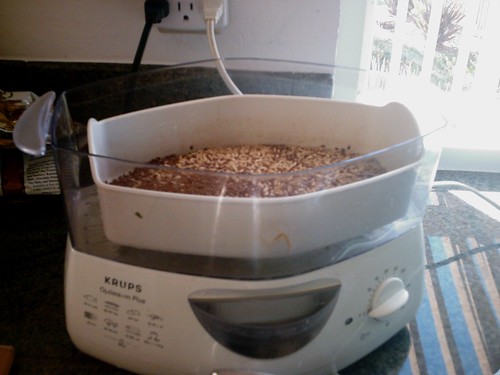 I thought I should blog about Baking Powder Biscuits this last week when I woke up and realized we hadn’t steamed
I thought I should blog about Baking Powder Biscuits this last week when I woke up and realized we hadn’t steamed 